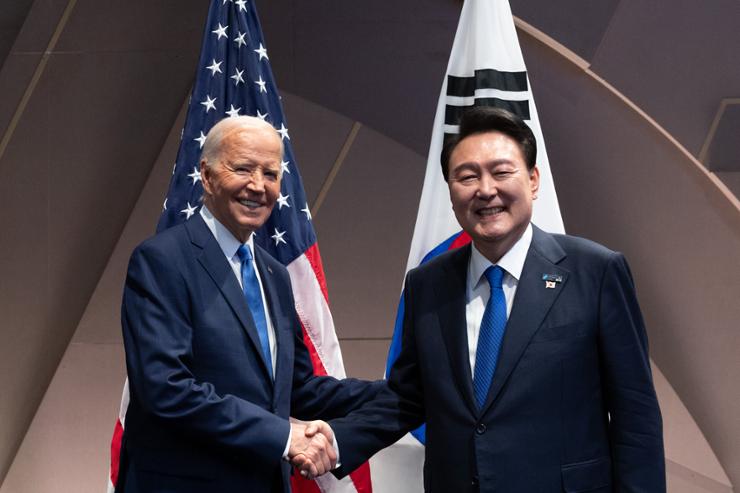WNAM MONITORING: South Korea and the United States have signed a landmark agreement to integrate Seoul’s conventional forces with U.S. nuclear capabilities, marking a significant enhancement in their security alliance in response to North Korea’s escalating nuclear threats.
The document, titled “Guidelines for Nuclear Deterrence and Nuclear Operations on the Korean Peninsula,” was signed by senior defense officials of both nations in Washington, Thursday (local time), shortly before a summit between President Yoon Suk Yeol and U.S. President Joe Biden, held on the sidelines of the annual NATO summit.
This marks the first time the two sides have formalized operational guidelines in a document stating that the U.S. may retaliate with nuclear weapons if North Korea employs nuclear arms against South Korea.
“The Guidelines document provides crucial guidance to Alliance policy and military authorities in maintaining and bolstering a credible and effective nuclear deterrence policy and posture,” read a joint statement issued by Yoon and Biden.
It added, “President Biden reiterated the U.S. commitment to extended deterrence for South Korea, backed by the full range of U.S. capabilities, including nuclear. President Yoon highlighted that South Korea’s full range of capabilities will significantly contribute to the Alliance’s combined defense posture.”
The two leaders also hailed the progress of the Nuclear Consultative Group (NCG) which was launched following the Washington Declaration in April 2023, saying that the NCG has facilitated joint nuclear and strategic planning with a focus on ensuring the continued safety and security of South Koreans, as well as U.S. troops deployed in the East Asian nation.
“This marks the first explicit statement in a document that U.S. nuclear assets will be assigned to missions aimed at deterring and responding to North Korean nuclear threats,” said First Deputy National Security Adviser Kim Tae-hyo.
A South Korean senior defense official said on condition of anonymity that the new guidelines will notably increase the frequency and intensity of U.S. nuclear asset deployments to the Korean Peninsula.
“Previously, U.S. extended deterrence was based solely on decisions and support by the U.S. Now, with the joint guidelines, the two countries have established a unified extended deterrence system,” the official told reporters, Friday.
“Now, both countries will jointly assess, operate, coordinate and conduct training related to U.S. nuclear operations,” he said.
The official declined to elaborate specifically on how the new guidelines will be reflected in future joint military exercises between South Korea and the U.S., citing the sensitivity of nuclear assets.
The signing of the major military document between Seoul and Washington comes about a month after North Korea and Russia forged a military pact to offer mutual military assistance if either is attacked. During a summit between North Korean leader Kim Jong-un and Russian President Vladimir Putin on June 19, the two sides upgraded their military ties to a de facto alliance level.








